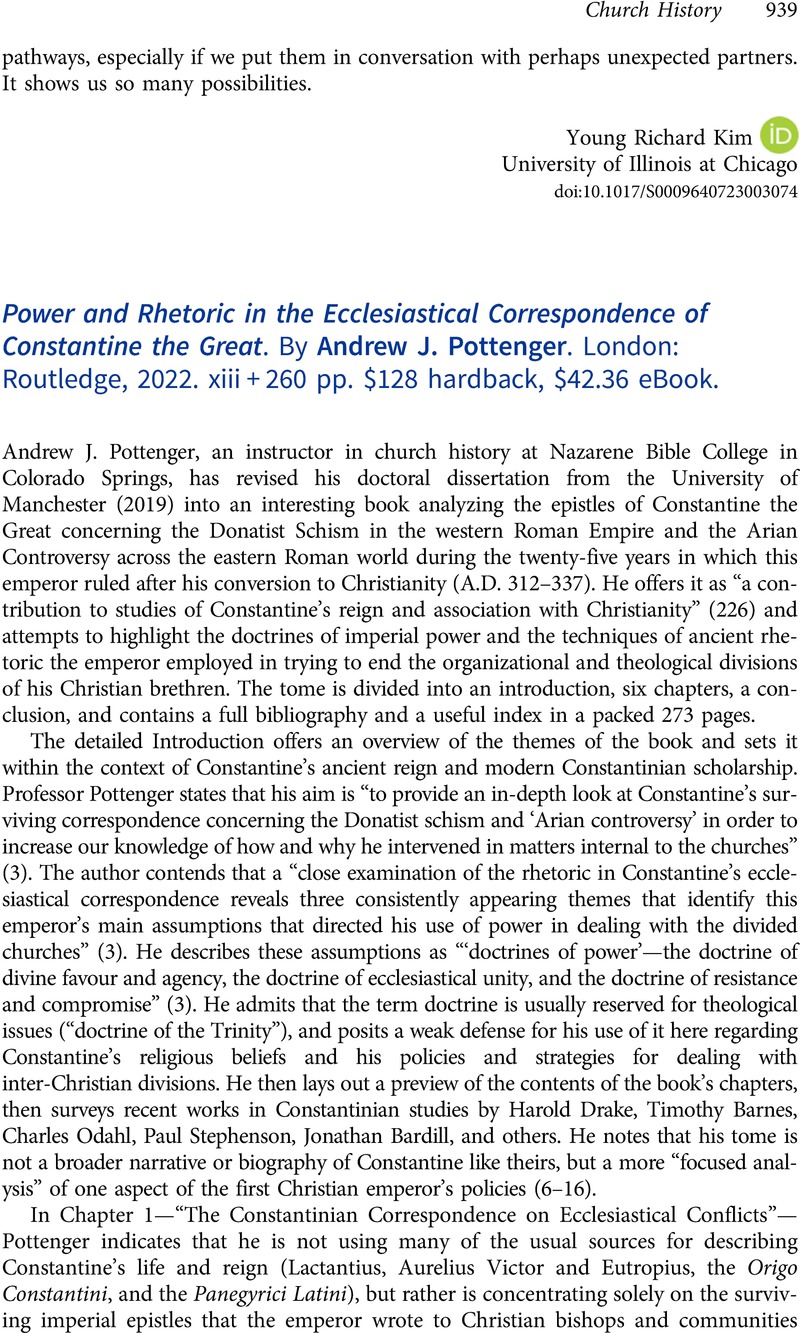No CrossRef data available.
Article contents
Power and Rhetoric in the Ecclesiastical Correspondence of Constantine the Great. By Andrew J. Pottenger. London: Routledge, 2022. xiii + 260 pp. $128 hardback, $42.36 eBook.
Review products
Published online by Cambridge University Press: 19 March 2024
Abstract

- Type
- Book Reviews and Notes
- Information
- Copyright
- Copyright © The Author(s), 2024. Published by Cambridge University Press on behalf of American Society of Church History


